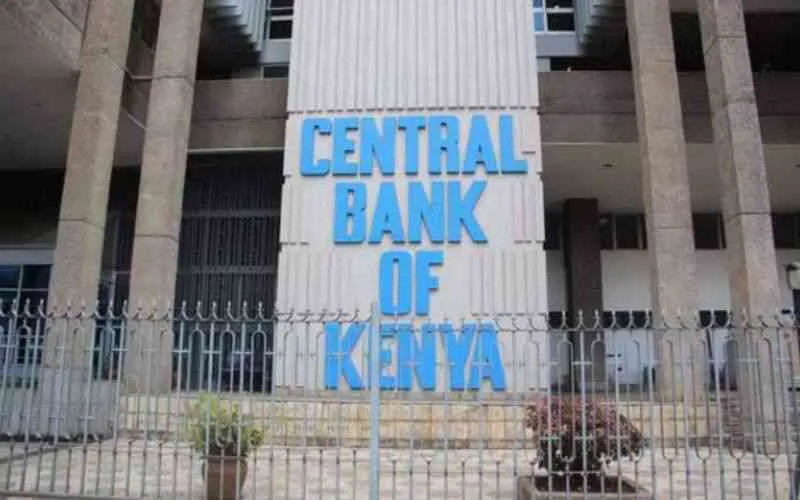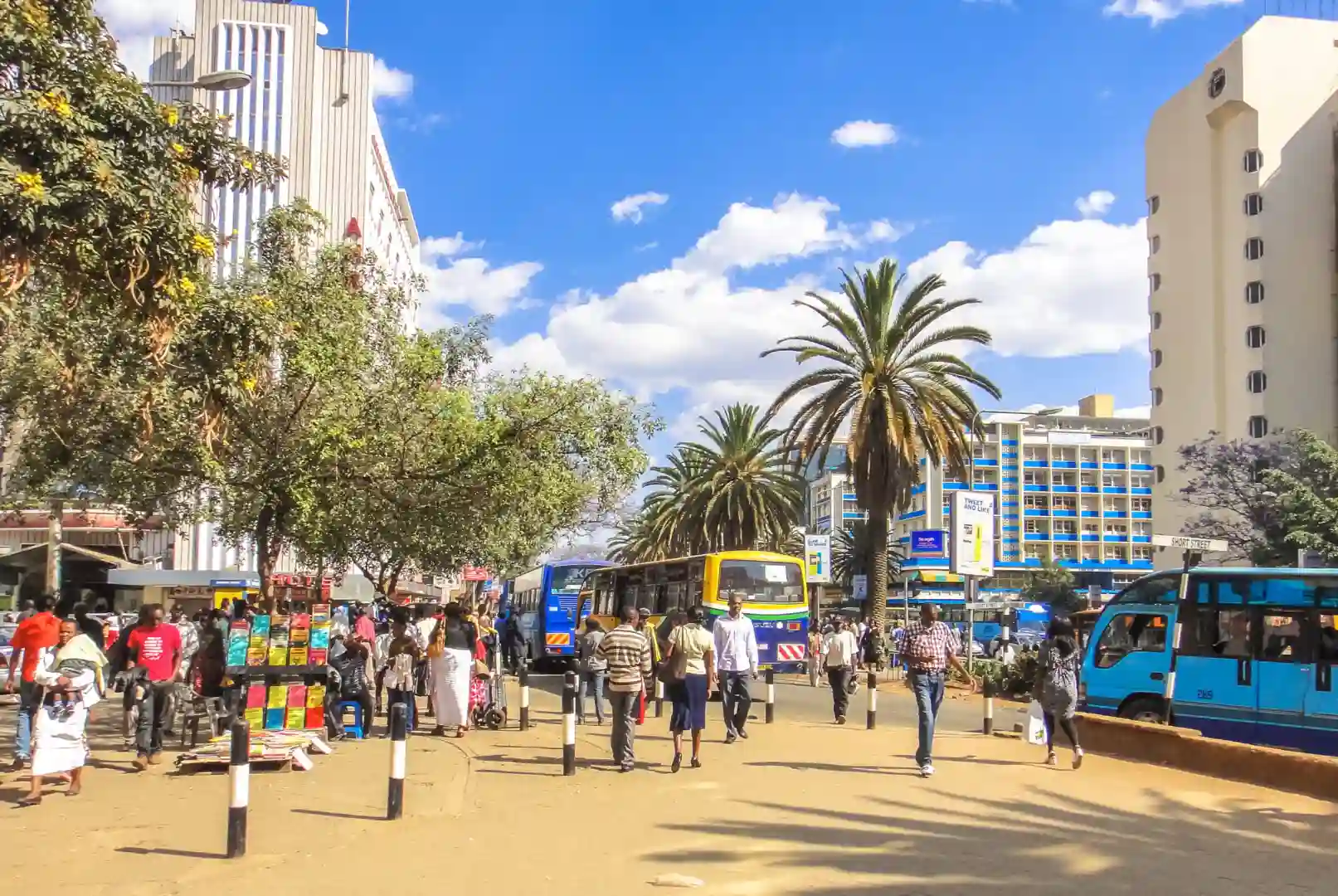The Central Bank of Kenya (CBK) has reaffirmed its confidence in the country’s macroeconomic stability by projecting that inflation will remain steady at 5.25 per cent through the end of the current economic cycle extending into 2026. This forecast, which keeps inflation comfortably below the midpoint of the central bank’s target range, reflects what monetary policymakers view as a favorable convergence of domestic economic resilience and moderating global price pressures.
Build the future you deserve. Get started with our top-tier Online courses: ACCA, HESI A2, ATI TEAS 7, HESI EXIT, NCLEX-RN, NCLEX-PN, and Financial Literacy. Let Serrari Ed guide your path to success. Enroll today.
Monetary Policy Committee’s Comprehensive Assessment
In its latest Monetary Policy Committee (MPC) report released on October 13, 2025, the CBK provided a detailed analysis of the factors underpinning its optimistic inflation outlook. The committee, which comprises senior central bank officials and meets regularly to assess economic conditions and determine appropriate monetary policy responses, attributed the stable inflation projection to several key factors that have combined to create a supportive environment for price stability.
Chief among these factors are steady prices for essential commodities that constitute a significant portion of consumer expenditure for Kenyan households. Food items, energy products, and other necessities have demonstrated remarkable price stability in recent months, helping to anchor overall inflation expectations and reduce cost-of-living pressures on citizens across income levels.
Additionally, the committee highlighted the resilience of the Kenya Shilling against major international currencies, particularly the US Dollar, which has helped moderate imported inflation. A stronger shilling reduces the local currency cost of imports, including crucial items like fuel, machinery, and intermediate goods used in manufacturing. This currency strength reflects improved foreign exchange inflows, reduced external vulnerabilities, and growing confidence in Kenya’s economic management.
Global Inflation Dynamics and Their Impact on Kenya
Looking beyond Kenya’s borders, the MPC expressed confidence that global inflation trends will work in the country’s favor during 2026. The committee expects worldwide inflationary pressures to decline, driven primarily by lower fuel prices on international markets and slowing global demand as major economies navigate their post-pandemic normalization processes.
The anticipated decline in global fuel prices reflects multiple factors including increased production capacity from major oil-producing nations, particularly OPEC member countries that have adjusted their output policies to balance market conditions. Additionally, the transition toward renewable energy in many developed economies is gradually reducing long-term dependence on fossil fuels, potentially moderating future price pressures.
Slowing global demand, while potentially concerning for export-oriented economies, can help reduce commodity price inflation and ease supply chain pressures that contributed to elevated inflation in recent years. As major economies including the United States, European Union, and China adjust their monetary policies and navigate growth challenges, the resulting moderation in demand for raw materials and finished goods should create a more benign inflation environment globally.
For Kenya, these global dynamics translate into reduced imported inflation through lower costs for fuel, industrial inputs, and consumer goods sourced internationally. Given Kenya’s status as a net importer of petroleum products and many manufactured goods, the country stands to benefit substantially from moderating international price pressures.
Domestic Economic Resilience: Agriculture and Industry Leading Growth
The MPC’s confidence in Kenya’s economic trajectory rests significantly on observed resilience across key sectors of the domestic economy. The committee specifically noted that Kenya’s economy has demonstrated robust performance during the second quarter of 2025, supported by two critical sectors: industry and agriculture.
Industrial Sector Recovery
The industrial sector, which encompasses manufacturing, construction, and utilities, has shown encouraging signs of recovery following challenges experienced in previous periods. The manufacturing sector, in particular, has benefited from improved access to credit, stable energy supplies, and growing domestic demand as consumer confidence gradually recovers.
Kenya’s industrial production has been supported by government initiatives aimed at promoting local manufacturing through favorable tax policies, infrastructure improvements, and efforts to reduce the cost of doing business. The Buy Kenya Build Kenya initiative and other programs designed to boost local production have begun yielding tangible results in terms of increased capacity utilization and employment creation.
The construction sector has similarly demonstrated momentum, driven by both public infrastructure projects and private real estate development. Major highway construction projects, urban renewal initiatives, and expansion of energy infrastructure have created substantial economic activity and employment opportunities across the country.
Agricultural Sector Performance
Agriculture, which employs the majority of Kenya’s workforce and contributes significantly to GDP, has maintained consistent growth during the second quarter of 2025. This performance is particularly significant given the sector’s vulnerability to weather patterns, climate variability, and global commodity price fluctuations.
The positive agricultural performance reflects several favorable factors including adequate rainfall in key farming regions, improved access to quality inputs like seeds and fertilizers, and government support programs aimed at enhancing agricultural productivity. The Ministry of Agriculture has implemented various initiatives to support smallholder farmers, improve irrigation infrastructure, and promote climate-smart agricultural practices.
Maize, wheat, tea, coffee, and horticultural exports have all contributed to the sector’s strong showing. The stability in agricultural production has helped ensure adequate food supplies domestically while supporting export earnings that strengthen the country’s external position.
The MPC’s assessment suggests that the momentum observed in both industrial and agricultural sectors during the second quarter will sustain economic stability through 2026, providing a solid foundation for continued growth and inflation control.
Interest Rate Cut: Stimulating Credit Growth and Investment
In a significant policy move aimed at supporting economic expansion, the CBK announced a 25 basis-point reduction in the Central Bank Rate (CBR) from 9.50 per cent to 9.25 per cent. This decision represents a recalibration of monetary policy toward a more accommodative stance designed to stimulate lending activity and encourage private-sector investment as the economy transitions into 2026.
The Central Bank Rate serves as the benchmark interest rate that influences borrowing costs throughout the economy. When the CBK reduces the CBR, it signals to commercial banks that monetary conditions are easing and that the central bank views current economic circumstances as appropriate for lower interest rates. This typically leads commercial banks to reduce their own lending rates, making credit more affordable for businesses and households.
According to the MPC report, “The reduction in the policy rate is expected to influence commercial banks to adjust their lending rates, supporting access to credit for households and businesses.” This improved credit access can stimulate economic activity in multiple ways.
For businesses, lower borrowing costs make investment projects more financially viable, potentially spurring capital expenditure on equipment, facilities, and technology. Small and medium enterprises (SMEs), which often face credit constraints, may find it easier to access working capital and expansion financing. Manufacturing companies can invest in productivity-enhancing machinery, while service sector firms can expand their operations into new markets.
For households, reduced lending rates can make mortgage loans, auto financing, and consumer credit more affordable, supporting consumption spending that drives economic growth. Lower interest rates also reduce debt servicing costs for existing borrowers, freeing up income for other expenditures or savings.
The timing of this rate cut reflects the MPC’s assessment that inflation pressures are sufficiently contained to allow for more accommodative monetary policy without risking a surge in price growth. By easing policy while inflation remains within the target range, the CBK aims to support economic expansion and job creation without compromising price stability.
One decision can change your entire career. Take that step with our Online courses in ACCA, HESI A2, ATI TEAS 7, HESI EXIT, NCLEX-RN, NCLEX-PN, and Financial Literacy. Join Serrari Ed and start building your brighter future today.
Energy Market Dynamics: Opportunities and Risks
Ahead of the upcoming fuel price review by the Energy and Petroleum Regulatory Authority (EPRA), which conducts monthly assessments to determine maximum retail prices for petroleum products, the MPC provided its assessment of global oil market conditions and their implications for Kenya.
The committee observed that global oil prices have moderated in recent months, a development attributed largely to increased production by OPEC countries. The Organization of the Petroleum Exporting Countries and its allies, collectively known as OPEC+, have adjusted their production quotas in response to market conditions, helping to prevent excessive price volatility and maintain adequate supply.
Lower international oil prices, if sustained, would translate into reduced fuel costs for Kenyan consumers and businesses when EPRA conducts its monthly price adjustments. This would provide relief for transportation costs, reduce input expenses for manufacturers, and ease cost-of-living pressures for households that allocate significant portions of their budgets to transport and energy.
However, the MPC cautioned that significant risks remain that could disrupt current favorable oil market dynamics and push prices upward. Specifically, the report warned about ongoing geopolitical tensions in the Middle East and the continuing war in Ukraine, both of which have potential to constrain global oil supplies and trigger price spikes.
The Middle East region contains the world’s largest concentration of petroleum reserves and production capacity. Any escalation of conflicts or tensions affecting major producing nations like Saudi Arabia, Iran, Iraq, or the United Arab Emirates could immediately impact global supply and send prices soaring. Similarly, disruptions to shipping routes through strategic chokepoints like the Strait of Hormuz could create supply bottlenecks with global ramifications.
The war in Ukraine continues to affect global energy markets through multiple channels. Russia, a major oil and gas producer, faces sanctions that have redirected trade flows and created market uncertainty. Additionally, attacks on energy infrastructure and concerns about European energy security contribute to price volatility in international markets.
For Kenya, which imports virtually all of its petroleum requirements, these geopolitical risks represent a significant external vulnerability that could undermine inflation control efforts if oil prices spike dramatically. The CBK’s acknowledgment of these risks demonstrates the central bank’s comprehensive approach to assessing factors that could affect its inflation outlook and monetary policy effectiveness.
Food Price Stability: A Critical Component of Inflation Control
Food prices have played a particularly major role in maintaining overall inflation stability in Kenya, where food items constitute a substantial portion of the consumer price index basket. The MPC highlighted that prices of essential food commodities including cereals, wheat, and sugar have remained moderate, supporting the favorable inflation environment.
Cereals and Wheat Markets
Prices for cereals and wheat have demonstrated stability supported by adequate global supplies and subdued import demand. International grain markets have benefited from favorable growing conditions in major producing regions including the United States, Europe, Russia, and Australia. Good harvests have ensured sufficient global supplies to meet demand without triggering the price spikes that can occur when production shortfalls create supply concerns.
For Kenya, which imports significant quantities of wheat to supplement domestic production and meet consumption needs, stable international prices have helped contain food inflation. The United Nations Food and Agriculture Organization (FAO) Food Price Index, which tracks monthly changes in international prices of globally traded food commodities, has shown moderation in cereal prices, providing relief for importing countries.
Domestically, Kenya’s own maize production has been adequate to meet most local consumption requirements, reducing dependence on imports and providing additional insulation from international price volatility. Government policies including subsidized fertilizer programs and support for smallholder farmers have contributed to improved domestic production.
Sugar Market Dynamics
Sugar prices have similarly stabilized, backed by high production in Brazil, the world’s largest sugar producer and exporter, and favorable harvests in India and Pakistan, two other major producing countries. Brazil’s sugar industry has benefited from good weather conditions and high productivity levels, ensuring abundant supplies for both domestic consumption and export markets.
India and Pakistan, which collectively account for substantial global sugar production, have also experienced favorable agricultural conditions supporting strong harvests. These positive supply developments have helped moderate international sugar prices, benefiting importing countries like Kenya where sugar is a staple commodity consumed across income levels.
For Kenyan consumers, stable sugar prices provide relief for household budgets and help contain overall food inflation. Sugar is consumed directly by households and is also a key input for food processing industries including beverages, confectionery, and baked goods. Stable sugar costs therefore have ripple effects throughout the food value chain.
Diaspora Remittances: A Resilient Source of Foreign Exchange
The MPC noted with satisfaction that diaspora remittances have continued to grow despite global economic uncertainties, providing crucial foreign exchange inflows that support the shilling’s stability and contribute to Kenya’s external balance position.
Kenya has one of Africa’s largest and most economically significant diaspora communities, with millions of Kenyans living and working abroad, particularly in North America, Europe, and the Middle East. These diaspora communities maintain strong connections with family members back home and regularly send money to support relatives, invest in property, fund education, and contribute to development projects.
Monthly remittance inflows to Kenya consistently exceed $300 million and have shown remarkable resilience even during global economic downturns. The CBK attributed the continued growth in remittances to two key factors: a wider diversity of source countries and government policies promoting skilled labour exports.
Diversification of Remittance Sources
Historically, Kenyan diaspora remittances were concentrated in a few major destination countries, primarily the United States and United Kingdom. However, recent years have seen growing diversification as Kenyans have established communities in a broader range of countries including Canada, Australia, Germany, Saudi Arabia, Qatar, and various other nations.
This geographic diversification reduces vulnerability to economic conditions in any single country or region. When one economy experiences recession or implements restrictive immigration policies, strong remittance flows from other countries can offset potential declines, ensuring overall stability in this crucial foreign exchange source.
Government Policies Supporting Labour Migration
The Kenyan government has implemented various policies and programs aimed at facilitating skilled labour exports and protecting migrant workers’ rights. These initiatives include bilateral labour agreements with destination countries, efforts to combat illegal recruitment practices, programs to enhance skills training for potential migrants, and improved consular services supporting diaspora communities abroad.
The Ministry of Foreign Affairs and the Ministry of Labour have collaborated on frameworks to ensure that Kenyans working abroad have access to proper documentation, legal protections, and support services. These efforts have helped maintain confidence among potential migrants and their families while addressing concerns about exploitation and poor working conditions that sometimes affect migrant workers.
GDP Growth Projections: Optimistic but Conditional
The CBK projects that Kenya’s Gross Domestic Product (GDP) will expand by 5.2 per cent in 2025 and accelerate to 5.5 per cent in 2026. These projections represent solid growth rates that, if achieved, would support job creation, poverty reduction, and improvements in living standards across the country.
The growth forecasts assume sustained investment in both public and private sectors and continued strength in agricultural performance. Public investment in infrastructure including roads, railways, energy, and water projects creates short-term economic activity during construction phases while establishing foundations for long-term productivity improvements and economic expansion.
Private sector investment, which the recent CBR reduction aims to stimulate, is equally crucial for generating sustainable growth. Business investment in productive capacity, technology adoption, and workforce development drives innovation, efficiency gains, and competitiveness that support long-term economic advancement.
The MPC credited these positive growth projections to robust policy measures and a supportive macroeconomic environment characterized by controlled inflation, stable exchange rates, improving infrastructure, and conducive business conditions. However, achieving these growth targets will require continued policy discipline, political stability, and favorable weather conditions for agriculture.
Conclusion: Cautious Optimism Amid External Uncertainties
The Central Bank of Kenya’s latest monetary policy assessment reflects cautious optimism about the country’s economic trajectory through 2026. By maintaining its inflation outlook at 5.25 per cent while reducing interest rates to support growth, the CBK is attempting to balance the dual objectives of price stability and economic expansion.
The confluence of stable food and energy prices, a resilient shilling, recovering industrial production, consistent agricultural growth, and sustained diaspora remittances provides a favorable foundation for continued macroeconomic stability. The decision to ease monetary policy through a modest rate cut demonstrates confidence that inflation pressures remain well-contained and that supporting economic growth has become a higher priority.
However, the CBK’s acknowledgment of external risks including geopolitical tensions, global oil market volatility, and international economic uncertainties highlights the challenges that could disrupt this positive scenario. Kenya’s economy, while increasingly resilient, remains vulnerable to external shocks beyond policymakers’ control.
As the economy transitions through 2026, the effectiveness of the CBK’s monetary policy framework, the government’s fiscal discipline, and the resilience of key economic sectors will all be tested. For now, the central bank has expressed confidence that Kenya’s economy remains on a stable trajectory capable of delivering sustained growth and controlled inflation despite the complex global environment.
For businesses, investors, and households, the stable inflation outlook and reduced borrowing costs create opportunities for planning, investment, and consumption that can support economic expansion. Whether these favorable conditions translate into the projected growth outcomes will depend on continued policy coherence, effective implementation of development programs, and the ability to navigate external challenges that remain beyond Kenya’s direct influence.
Ready to take your career to the next level? Join our Online courses: ACCA, HESI A2, ATI TEAS 7 , HESI EXIT , NCLEX – RN and NCLEX – PN, Financial Literacy!🌟 Dive into a world of opportunities and empower yourself for success. Explore more at Serrari Ed and start your exciting journey today! ✨
Track GDP, Inflation and Central Bank rates for top African markets with Serrari’s comparator tool.
See today’s Treasury bonds and Money market funds movement across financial service providers in Kenya, using Serrari’s comparator tools.
Photo source: Google
By: Montel Kamau
Serrari Financial Analyst
16th October, 2025
Article, Financial and News Disclaimer
The Value of a Financial Advisor
While this article offers valuable insights, it is essential to recognize that personal finance can be highly complex and unique to each individual. A financial advisor provides professional expertise and personalized guidance to help you make well-informed decisions tailored to your specific circumstances and goals.
Beyond offering knowledge, a financial advisor serves as a trusted partner to help you stay disciplined, avoid common pitfalls, and remain focused on your long-term objectives. Their perspective and experience can complement your own efforts, enhancing your financial well-being and ensuring a more confident approach to managing your finances.
Disclaimer: This article is for informational purposes only and does not constitute financial advice. Readers are encouraged to consult a licensed financial advisor to obtain guidance specific to their financial situation.
Article and News Disclaimer
The information provided on www.serrarigroup.com is for general informational purposes only. While we strive to keep the information up to date and accurate, we make no representations or warranties of any kind, express or implied, about the completeness, accuracy, reliability, suitability, or availability with respect to the website or the information, products, services, or related graphics contained on the website for any purpose. Any reliance you place on such information is therefore strictly at your own risk.
www.serrarigroup.com is not responsible for any errors or omissions, or for the results obtained from the use of this information. All information on the website is provided on an as-is basis, with no guarantee of completeness, accuracy, timeliness, or of the results obtained from the use of this information, and without warranty of any kind, express or implied, including but not limited to warranties of performance, merchantability, and fitness for a particular purpose.
In no event will www.serrarigroup.com be liable to you or anyone else for any decision made or action taken in reliance on the information provided on the website or for any consequential, special, or similar damages, even if advised of the possibility of such damages.
The articles, news, and information presented on www.serrarigroup.com reflect the opinions of the respective authors and contributors and do not necessarily represent the views of the website or its management. Any views or opinions expressed are solely those of the individual authors and do not represent the website's views or opinions as a whole.
The content on www.serrarigroup.com may include links to external websites, which are provided for convenience and informational purposes only. We have no control over the nature, content, and availability of those sites. The inclusion of any links does not necessarily imply a recommendation or endorsement of the views expressed within them.
Every effort is made to keep the website up and running smoothly. However, www.serrarigroup.com takes no responsibility for, and will not be liable for, the website being temporarily unavailable due to technical issues beyond our control.
Please note that laws, regulations, and information can change rapidly, and we advise you to conduct further research and seek professional advice when necessary.
By using www.serrarigroup.com, you agree to this disclaimer and its terms. If you do not agree with this disclaimer, please do not use the website.
www.serrarigroup.com, reserves the right to update, modify, or remove any part of this disclaimer without prior notice. It is your responsibility to review this disclaimer periodically for changes.
Serrari Group 2025












